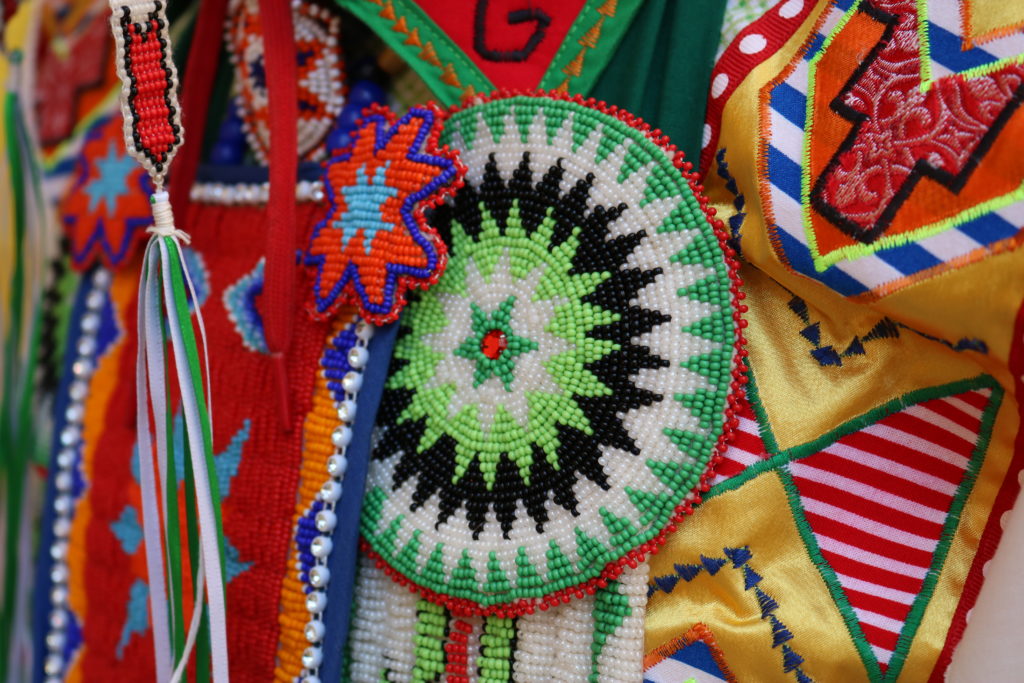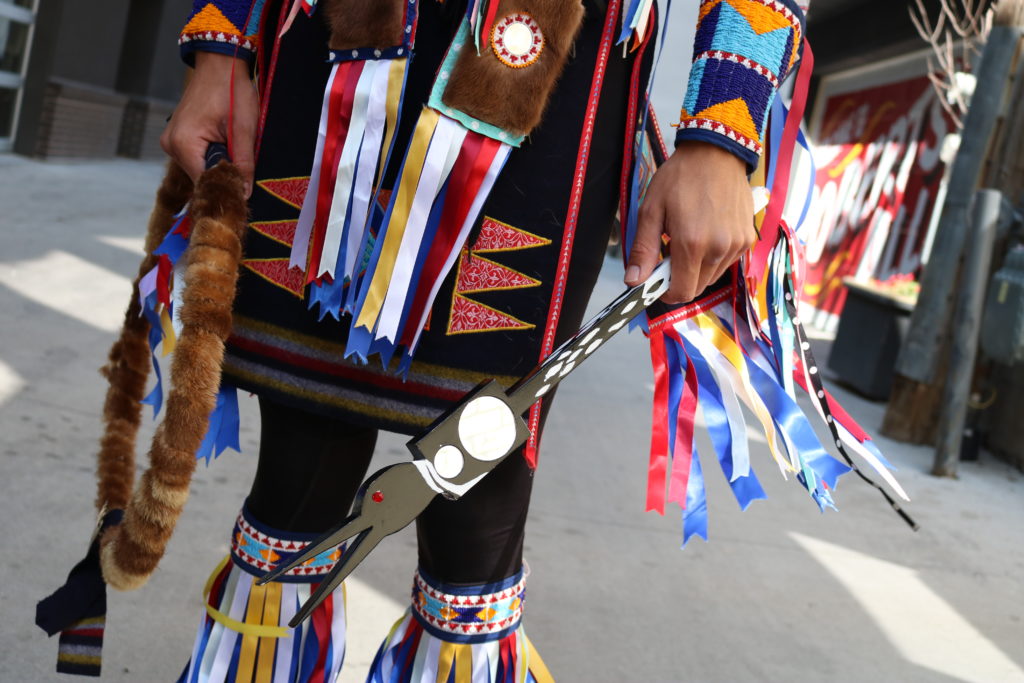

The powwow let attendees celebrate Native American culture
No excuse for cultural ignorance, how the Culture in Motion Powwow showcased Native American culture
Oct. 5 and 6 marked the fourth annual Fargo-Moorhead Culture in Motion Powwow at Scheels Arena. The event allowed the community to immerse themselves in Native American culture while enjoying music and dancing along with a juried arts and crafts festival.
Scott Satermo, an organizer of the powwow, from FM Crossroads spoke about why everyone should have attended the event along with the mission of the organization.
FM Crossroads, a non-profit organization, starting putting powwows together in 1984 that brought out local community members. The powwows then grew into the tri-college powwow that the universities host.
“I’ve always wanted to bring contest powwow into Fargo, it’s a little bit different than traditional (powwow’s) because these are professional people that are on the circuit that dance.”
FM Crossroads sponsors a range of events including working with kids through an Indian Education Program. The program works with the education system in Fargo’s public schools by bringing singers and dancers into the schools to inform kids about their culture.
The purpose of FM Crossroads is to grow awareness of Native American culture. Satermo described the organization as: “To help people understand that native people and native culture isn’t a dead culture. That the culture and the people are a vibrant, living culture.”
“We still speak our language, we still do our ceremonies. We’re people in the community. We’re not all living on a reservation isolated somewhere,” Satermo said. He also explained that within the FM area, there are close to 100 tribes.
In past powwow’s, Satermo talked about how there usually isn’t a lot of non-native people who come to the event. He wanted to see a change in the non-native turnout for this powwow as he wants more people to learn about the Native American culture.
“That’s one of our biggest issues. People don’t always feel comfortable coming, it’s more that they are over respectful,” Satermo said when explaining why non-native people usually don’t attend powwows and other Native American events.
“Sometimes people go, they think it’s really cool, but they don’t understand what’s going on,” Satermo said. “So we’re trying to explain things a little bit more this year than we usually would.”
“We just would assume that they came and asked questions and learned about things and were part of it,” Satermo added.
Since the powwow was a community event, Satermo emphasized that everyone was encouraged to join in the festivities saying that it wasn’t a celebration only for Native Americans.
“We just need to have a open relationship with each other to talk about things and celebrate each others differences.”
Scott Satermo
In order to have more people attend the powwow, Satermo discussed how they planned to make the powwow more appealing to the public.
An art exhibit through the Plains Art Museum was at the event letting attendees view artists’ work. A youth combine was also hosted by former North Dakota State University football players such as Cole Jirik and Chase Morlock who put on some drills that children could participate in from 5 p.m. to 7 p.m.
Some of the other features of the powwow were native craft/beadwork made by high-end artists along with an Indian education presentation for the youth which offered activities.
A dance troop called the Yellow Bird Productions was also present. Yellow Bird Productions has traveled all over the world winning countless awards for their singing and dancing. Some of the people they have performed for include First Lady Laura Bush at the Kennedy Center for Performing arts.
Throughout the two days, the Yellow Birds performed a variety of different dances from tribes and explained what each dance meant to the audience afterward.
Along with the Yellow Birds, there were 12 contest drum groups from all over the country and Canada including Grammy-winning singers and drum-liners. It was expected that there were 1,000 different dancers from the age of 5 to 65.
Regarding why non-natives should attend powwows and Native American events, Satermo views native culture just as important as any other culture as exposure to other’s cultures is important to him.
“I think that’s one of the problems we have in our whole society right now. People just don’t get along and isolate themselves.”
Native American culture is a broad culture as there are many subcultures that can differ from one another with the dances and language.
Those in attendance could learn about the many subcultures as the various tribes took part in the festivities. The Hidatsa and Lakota tribes were two of the many cultures at the event.
Satermo then discussed whether the FM area participates in Native American events. “I think as a whole, Fargo/Moorhead has really embraced Native culture more than they did 30 years ago,” Satermo said.
“When I came to NDSU, there were ten Native students in the whole school,” Satermo recalled. “They didn’t have a Native program, they didn’t have any cultural diversity.”
“Now there’s more cultural awareness, people are trying to learn more things. Fargo/Moorhead has been great about that. They are one of the first cities that started a Native American commission to look at cultural issues with Native people.”
Satermo was on the Native American commission about 15 years ago and now the commission is one of the sponsors for the FM Crossroads.
Satermo then talked about what the FM region can do to improve awareness of Native American culture. “We need to continue to have discussions and we need to continue to relate to each other in a constructive way.”
“One of the things about having a celebration like this is that it’s fun, it’s a dance, it’s a celebration. You’re celebrating the culture, you’re not trying to impose anything on anybody,” Satermo said.
The Culture in Motion Powwow’s purpose is to make people comfortable within different cultures without feeling like they are intruding on another’s culture.
“We just need to have an open relationship with each other to talk about things and celebrate each other’s differences,” Satermo said.
By the end of the two-day event, attendees were able to learn about a culture they may have not known a lot about and were able to break down stereotypes.
All proceeds made at the Culture in Motion Powwow went to FM Crossroads work in providing academic scholarships and K-12 programming in the FM area.
